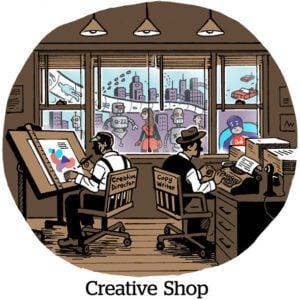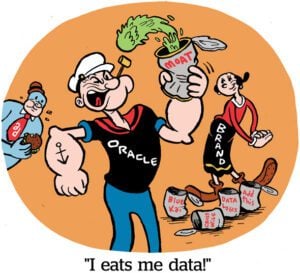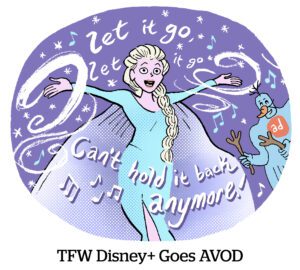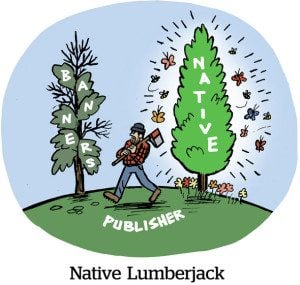Publisher frustrations about changes to the digital advertising ecosystem are starting to boil over – and there were plenty of grievances aired at the Prebid Summit earlier this week in New York City.
The event was the first-ever gathering of its type hosted by Prebid, which is the organization behind the widely used open-source header bidding software.
What happens when you get a bunch of smart, technical, pissed-off publishers and SSPs in one room?
They give you an unvarnished glimpse of the spirited discussions taking place inside Prebid’s working groups.
Here are some of the spicier things AdExchanger overheard at the event.
No one is ready for the Privacy Sandbox
Sounds like third-party cookies have something in common with The Fonz.
“The third-party cookie jumped the shark a long time ago,” said Garrett McGrath, Magnite’s SVP of product management. “We need to move away from that and give more control to publishers and users.”
But what Magnite hears from publishers is that they’re just beginning to test Google’s Privacy Sandbox and come to grips with the significant changes that DSPs and SSPs will have to make.
So, while the ecosystem seems to support the intent behind the Privacy Sandbox, when it comes to the nuts and bolts of making it work, “we’re not super close right now,” McGrath said.
Is sustainability screwing over publishers?
During a workshop session about SPO and demand-path optimization, Stephen Johnston Jr., founder and CTO of PubWise, mentioned that Prebid is working on demand quality.
The purpose is to look into what resellers are doing during programmatic auctions and whether they’re actually bidding on impressions with the intent to win auctions. Conveying this information to publishers can help with their sustainability efforts.
The mention of sustainability prompted Jordan Cauley, senior director of product at Mediavine, to quip: “You don’t think sustainability is just an arbitrary catch-on to make SPO seem more palatable?”
Cauley admitted he was “just dropping a bomb for shits and giggles,” and conceded that better environmental sustainability and cheaper prices for buyers are not mutually exclusive. But conversations about sustainability also need to consider the size of ad creatives and the number of tags that get included in creative, he said. “We’re attacking the smallest surface area of bid request size rather than the large surface area of served ads.”
Cauley’s comment prompted other sell-side players who attended the workshop to weigh in on how efforts to create a more sustainable digital advertising ecosystem have been too focused on bid density, especially given that publishers are incentivized to send a high volume of requests.
“You make more revenue if you are able to get more requests to the DSPs because you are more likely to get through campaign pacing,” said Nils Lind, CEO of Assertive Yield, a revenue management platform. “From the publisher’s perspective, there’s no incentive to only have one direct path.”
Some in the room suggested that being able to attribute revenue to specific line items in a publisher’s Ads.txt file would make it easier for publishers to cut resellers that aren’t actually buying inventory. But one attendee joked that this sounds like the intention behind Buyers.json, which “nobody uses.”
An overwhelming amount of alternative options
Meanwhile, publishers are facing the prospect of testing all sorts of third-party cookie alternatives, and the sheer number of solutions is daunting, said Paul Ryan, CTO at OpenX.
Since Prebid supports dozens of alternative IDs, new buying mechanisms and a host of analytics modules, the fact is that publishers and SSPs have to be very savvy about what they’re testing in the coming months, Ryan said.
For its part, publisher tech company Freestar is currently testing around 14 different ID modules, said Matt Burgess, EVP of demand.
But what buyers tell Freestar about their preferences isn’t always borne out in the testing. For example, some buyers say they don’t want to do audience matching using probabilistic IDs, however, they are still transacting on deals that use them.
How SSPs curate publisher inventory can also impact how ads are purchased. For example, Freestar noticed SSPs curating inventory into deal IDs without Freestar’s knowledge, Burgess said. But rather than fighting that practice, Freestar is leaning in to try and maximize the revenue its publishers get from these deals.
Programmatic guaranteed (PG) deals are another alternative buying method aimed at giving access to specific publisher inventory. But PG sales are down this year, according to Ryan Maynard, VP of programmatic sales operations at Raptive (formerly CafeMedia), prompting Raptive to wonder if buyers really do want to transact this way.
Is contextual targeting catching on?
In addition to the need for testing alternative solutions, the impending death of third-party cookies has also prompted a pivot back to contextual targeting.
But buyers appear to trust content-based contextual targeting at the URL level more than audience-based contextual targeting, like Seller Defined Audiences (SDA), “because you actually have to believe the audience, and it has to be certified,” said OpenX’s Ryan.
The problem with SDA is that most publishers use the IAB Tech Lab’s Content Taxonomy to classify audience segments, but “no DSP listens to that,” Ryan said, since they prefer to use their own content taxonomies instead.
However, that doesn’t mean the industry can throw its hands up and admit defeat on SDA, said Stephanie Layser, global head of publisher ad tech solutions at Amazon Web Services. Instead, organizations like Prebid and the IAB Tech Lab need to focus on making standards workable and certifiable because that’s what the buy side wants.
But creating standards doesn’t mean they’ll be adopted.
“You can promulgate all kinds of crazy stuff as standard,” Ryan said. “But if they don’t get implemented by the people with the money, then it really doesn’t matter.”













